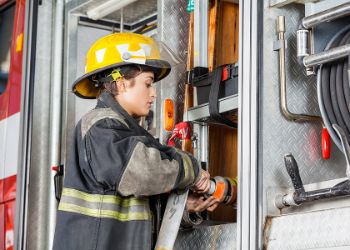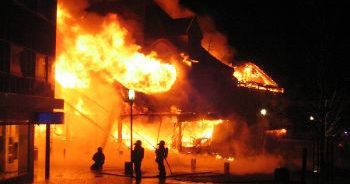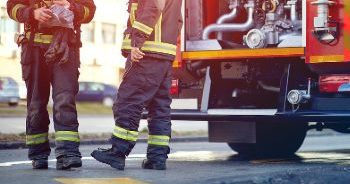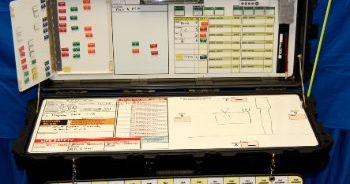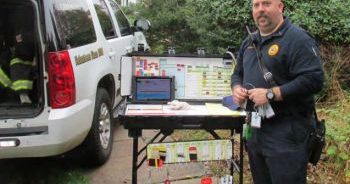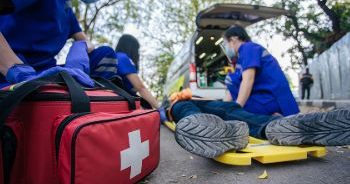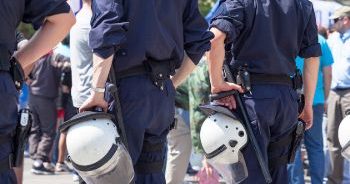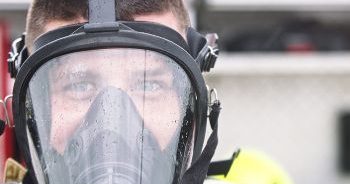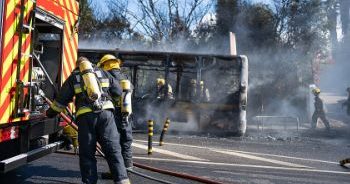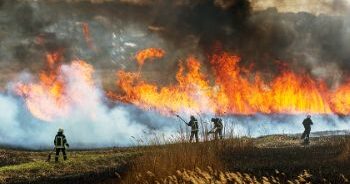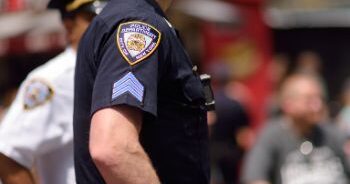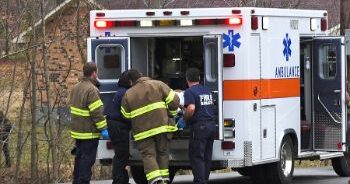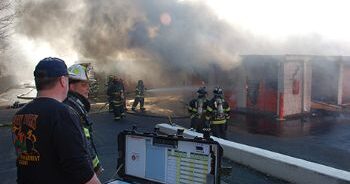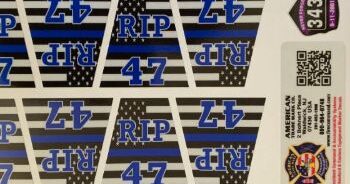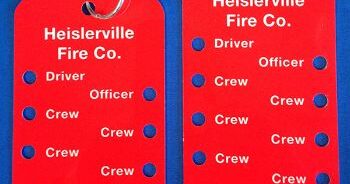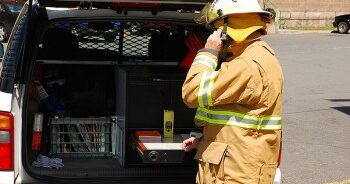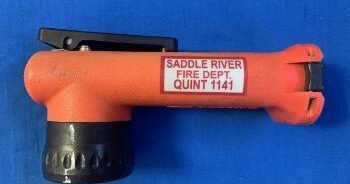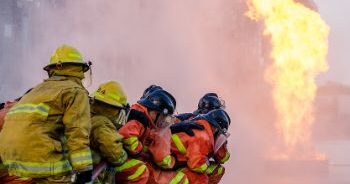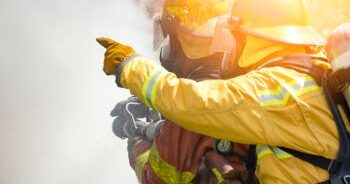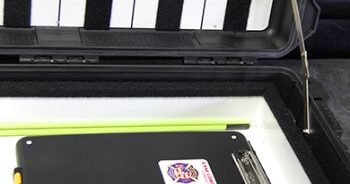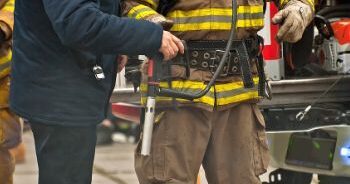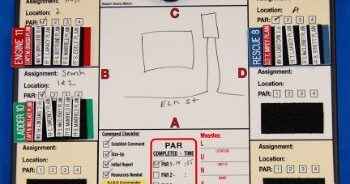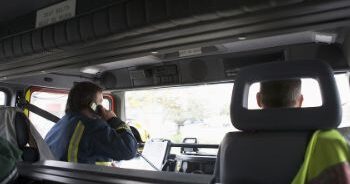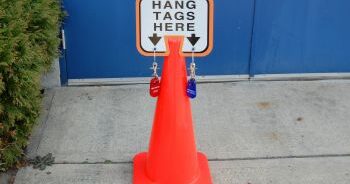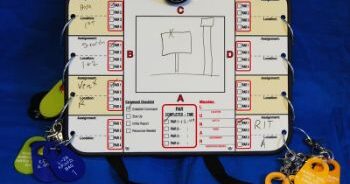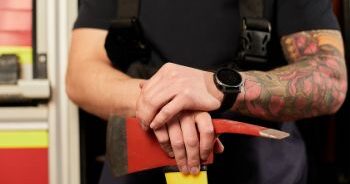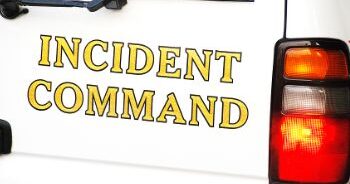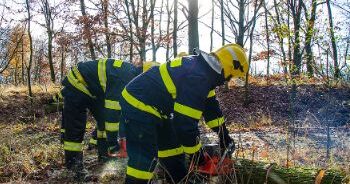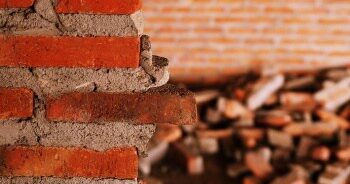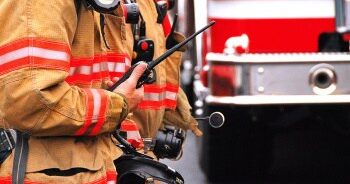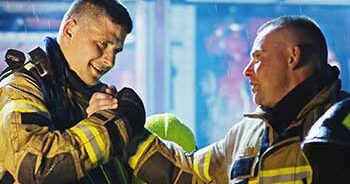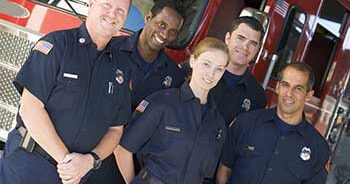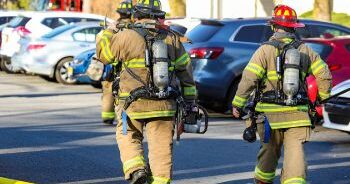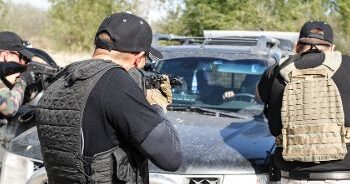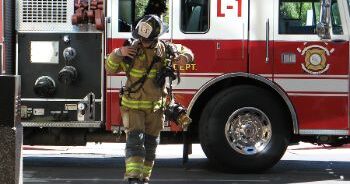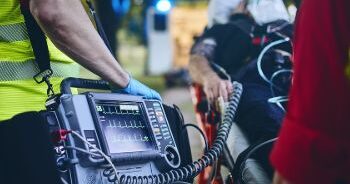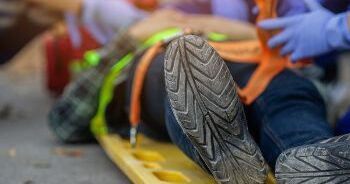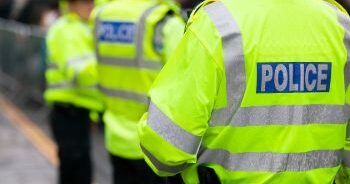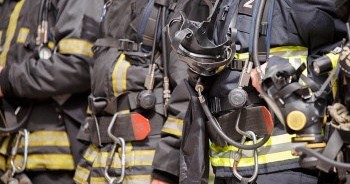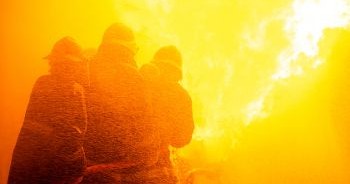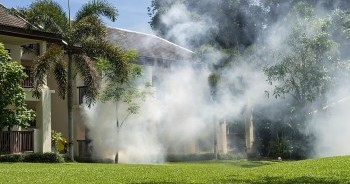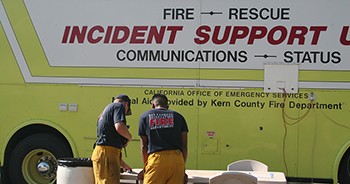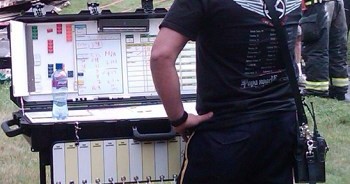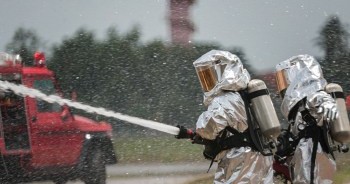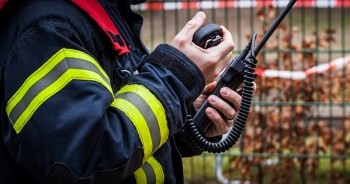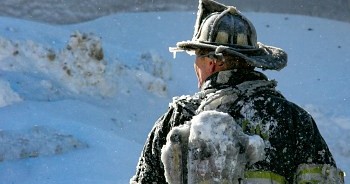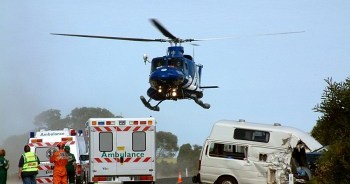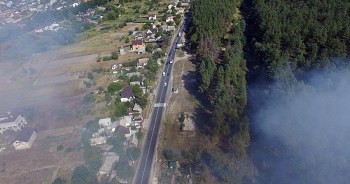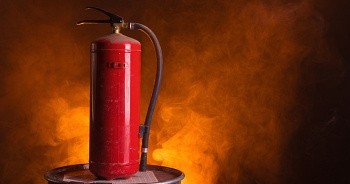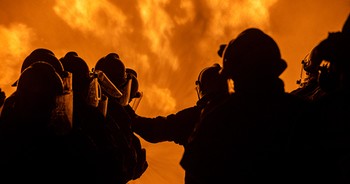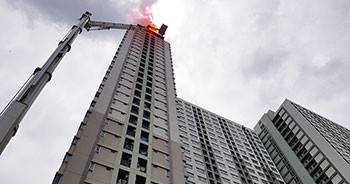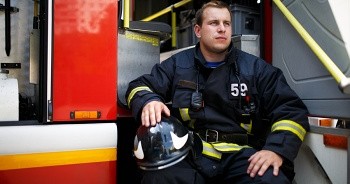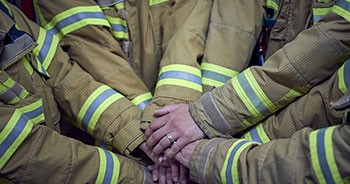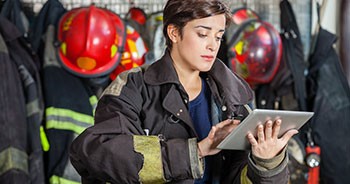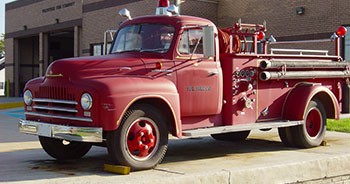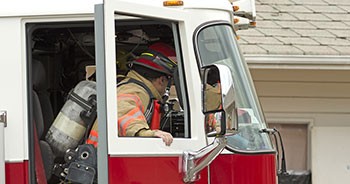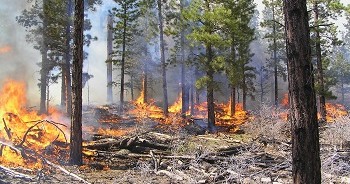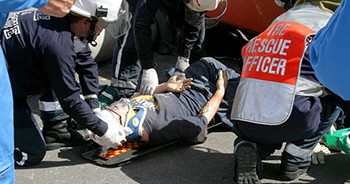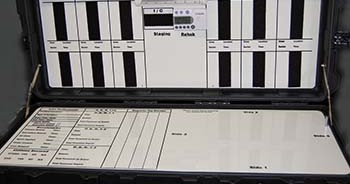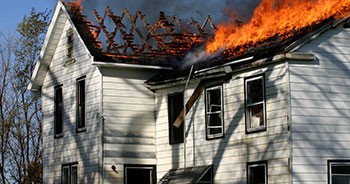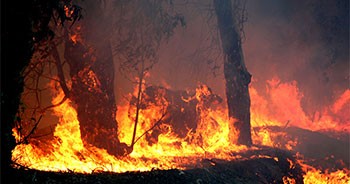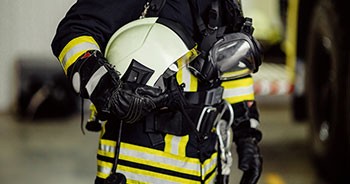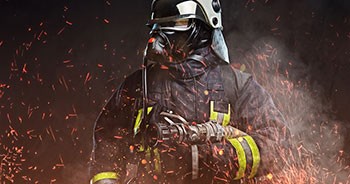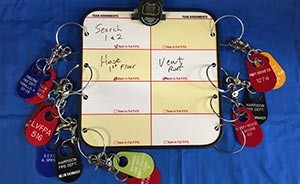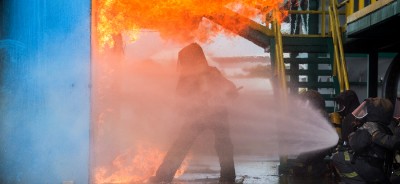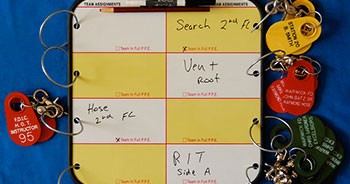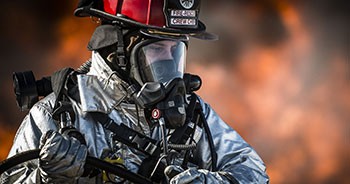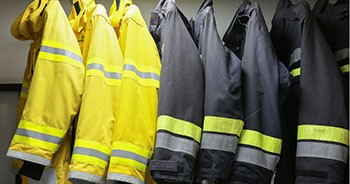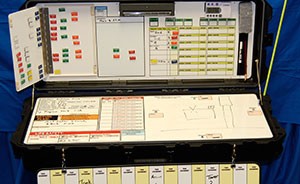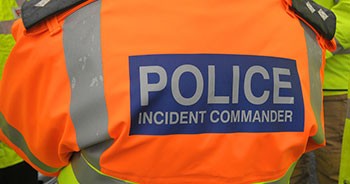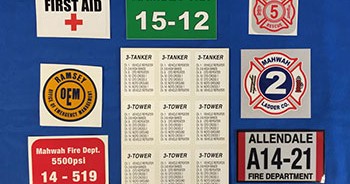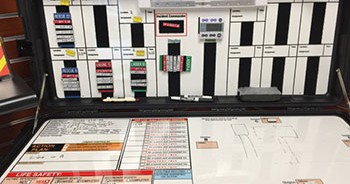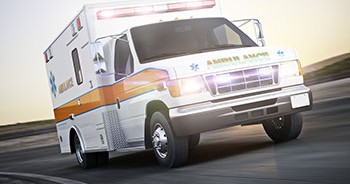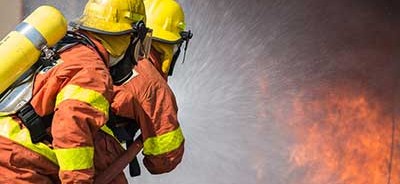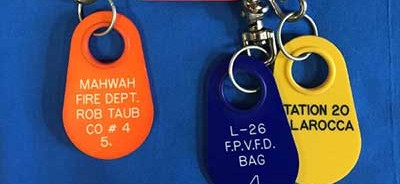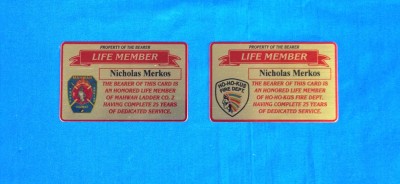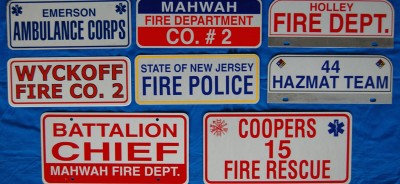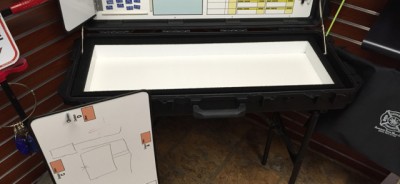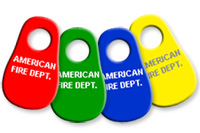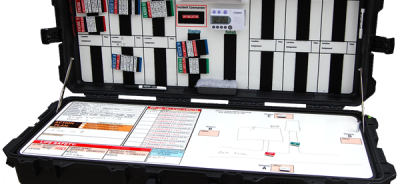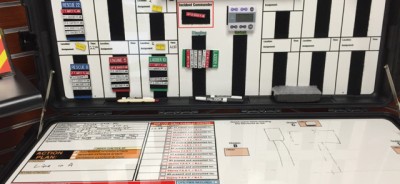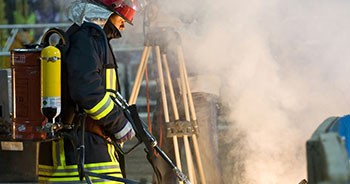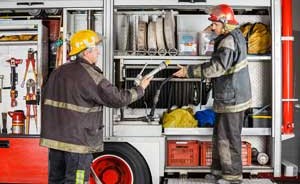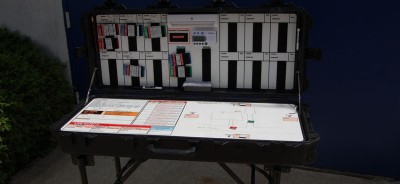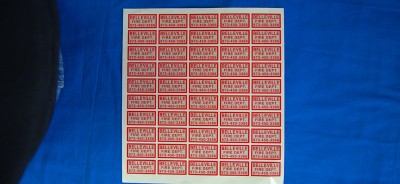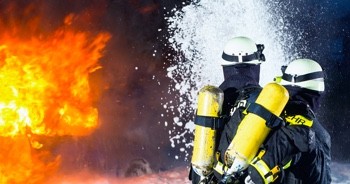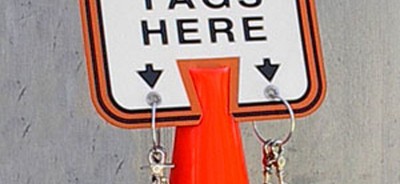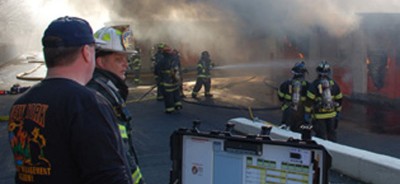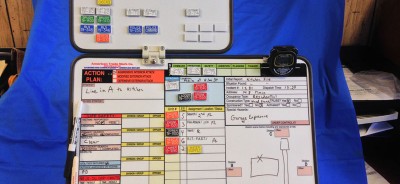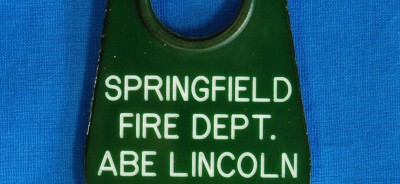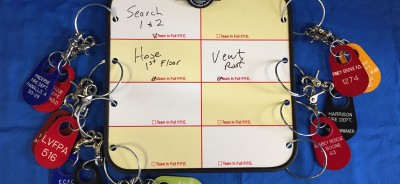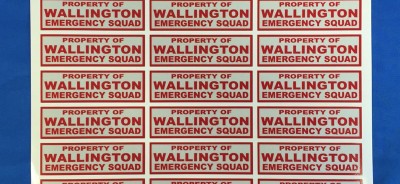Safety & Compliance: Firefighter Gear Inspection Best Practices
Ensuring firefighter safety through rigorous gear inspection and maintenance is fundamental to any fire department’s operations. Properly maintained gear not only maximizes the effectiveness and safety of firefighters in the face of hazardous conditions but also extends the lifecycle of the equipment, resulting in cost savings for the department. American Trade Mark Co offers equipment marker decals to help label and identify these crucial elements.
Importance Of Firefighter Equipment Tags
Firefighter equipment tags play a critical role in maintaining the effectiveness and traceability of equipment. These tags serve as identifiers, allowing each piece of equipment to be tracked throughout its lifecycle. A custom equipment tagging system ensures that equipment can be efficiently logged, monitored, and recalled when necessary.
- Ensures Accurate Record-Keeping
- Facilitates Routine Inspections & Maintenance
- Enhances Accountability & Compliance
- Streamlines Equipment Checks & Inventory Management
Thorough and regular inspections are the cornerstone of effective fire department operations. These inspections not only ensure that equipment is in working order but also extend the gear’s lifespan and prevent potential incidents caused by equipment failures.
Key Steps For An Effective Inspection
Conducting firefighter gear checks involves several essential steps:
- Visual Inspection: Examine equipment for any visible signs of damage such as cracks, wear, or corrosion.
- Functional Testing: Ensure that all gear functions as intended. This might include testing hoses for water flow, checking SCBA units for proper airflow, checking that reflective markers still work properly, and ensuring communication devices are operational.
- Cleanliness: Regular decontamination and cleaning prevent the buildup of toxic substances and contaminants.
- Documentation: Record the results of each inspection, noting any issues found, actions taken, and the date and time of the inspection.
Safety Best Practices
Safety is paramount in firefighting and emergency response careers. Adherence to safety standards for gear and equipment helps mitigate risks in the field. Implementing rigorous safety protocols ensures that firefighters can carry out their duties with confidence.
- Personal Protective Equipment (PPE): Regular inspection of PPE including helmets, gloves, boots, and body gear.
- Respiratory Protection: Maintain and test SCBA units, masks, and other respiratory protection equipment.
- Communication Devices: Ensure radios, signal devices, and other communication tools are functional and charged.
- Fire Suppression Tools: Inspect hoses, pumps, extinguishers, and other fire suppression equipment regularly.
Compliance Protocols In Firefighting
Adhering to local, state, and federal compliance protocols is essential for legal and operational viability. Compliance ensures that fire departments operate within the guidelines prescribed by governing bodies, which enhances safety and operational efficiency.
Key Compliance Protocols
To maintain compliance, consider the following protocols:
- Inspection Schedules: Adhere to mandated inspection schedules for all equipment.
- Training & Certification: Ensure that all personnel involved in inspections are adequately trained and certified as per regulatory requirements
- Record Keeping: Maintain meticulous records of all inspections, repairs, and maintenance activities.
- Regular Updates: Stay informed about new regulations and standards that affect firefighting equipment and practices.
Firefighter Gear Checks
Regular firefighter gear checks are crucial in identifying and mitigating potential hazards before they compromise a responder’s safety. This proactive measure fosters a culture of safety and prepares teams for various emergency scenarios. Gear checks should be systematic and thorough. Here are some procedures to follow:
- Inventory Management: Keep an up-to-date inventory of all gear and equipment
- Routine Checks: Schedule and perform regular checks, focusing on different types of equipment during each inspection.
- Condition Assessment: Evaluate the condition of the gear and determine if it requires repair, replacement, or servicing.
- Feedback Loop: Foster communication between inspectors and users to report issues and suggest improvements.
Safety Standards For Gear
Implementing and adhering to established safety standards for gear is critical in ensuring equipment reliability. These standards should be universally understood and strictly followed by all members of the fire department.
- Standard Operating Procedures (SOPs): Develop and enforce SOPs that outline specific gear safety requirements and handling procedures.
- Regular Training: Conduct training sessions to ensure all personnel are familiar with safety standards and the proper use of equipment.
- Compliance Monitoring: Appoint safety officers to monitor adherence to safety standards and address any non-compliance.
- Continuous Improvement: Regularly review and update safety standards to incorporate new technologies and industry practices.
Equipment Maintenance Guidelines
Routine maintenance is vital in extending the usability and performance of firefighting equipment. Maintenance practices should be well-documented and entrusted to qualified personnel to prevent equipment failure. A comprehensive maintenance plan for firefighter gear should include:
- Scheduled Maintenance: Perform preventative maintenance on a set schedule to prevent wear and tear.
- Repairs & Replacements: Quickly address any damage or malfunctions with appropriate repairs or replacement of faulty gear.
- Maintenance Logs: Keep detailed logs of maintenance activities, outlining the services performed, parts replaced, and any issues noted.
- Expert Services: Utilize certified technicians and service providers when specialized maintenance or repairs are required.
Firefighter Safety Protocols
Establishing and following firefighter safety protocols is vital in minimizing risks and promoting a safe working environment. Implementing these protocols ensures that responders are well-prepared and protected during operations.
- Risk Assessment: Conduct risk assessments to identify potential hazards and enforce safety measures.
- Safety Drills: Regularly carry out safety drills to prepare firefighters for hazardous situations
- Continuous Training: Provide ongoing training on new safety techniques and equipment usage.
- Incident Reporting: Encourage prompt reporting of incidents and near-misses to identify areas for improvement.
Gear Inspection Procedures
Gear inspection procedures should be detailed and cover all aspects of firefighter equipment. These procedures ensure that every piece of gear is functional and ready for deployment at any time. Thorough inspections should cover every item of personal protective equipment, breathing apparatus, communication devices, tools, and other essential gear used in fire operations.
Ensuring Compliance In Firefighting
Ensuring compliance in firefighting requires a commitment to upholding standards and a proactive approach to addressing challenges. Compliance should be viewed as an integral part of operational success. Effective strategies include:
- Regular Audits: Conduct internal and external audits to verify compliance with regulations and standards.
- Compliance Training: Implement regular training sessions on compliance standards and protocols.
- Policy Documentation: Develop comprehensive policy documents and make them easily accessible to all personnel.
- Issue Resolution: Establish a clear process for identifying and rectifying compliance issues.
Safety Checks For Firefighters
Conducting regular safety checks ensures firefighter equipment is functioning properly and personnel are prepared for any emergency. These checks are essential to a proactive safety culture, helping to identify issues before they become critical failures. By fostering responsibility and vigilance, safety checks reduce the risk of equipment malfunctions and injuries, ensuring firefighters operate with reliable tools.
- Pre-Operation Checks: Perform safety checks before every operation to ensure equipment reliability.
- Post-incident Reviews: Conduct reviews after incidents to assess equipment performance and identify any necessary adjustments.
- Crew Involvement: Involve crew members in safety checks to ensure thoroughness and accountability.
- Immediate Repairs: Address any identified issues or defects immediately to prevent future failures.
Mark Your Gear Effectively Today
Enhancing firefighter safety through effective gear inspection and maintenance is paramount to the success of any fire department. By following the best practices and guidelines outlined above, you ensure that your team is prepared and protected. Trust American Trade Mark Co. for reliable and compliant solutions to support your operational needs nationwide. Start implementing these procedures now to safeguard your most valuable assets – your firefighters. Contact us today to learn more about our comprehensive fire equipment management solutions and inspection tools.
Related Posts
Fireground safety is a given priority, but even the most experienced crew may overlook...
Fireground accountability is crucial for maintaining safety and efficiency during emergency operations. Despite rigorous...
In the high-stakes world of EMS, error-free operations are crucial. Sophisticated tools, like EMS...
Magnetic command boards are a practical and flexible tool for organizing search-and-rescue missions. They...
In Emergency Medical Services (EMS), infection control is vital to protecting first responders and...
American Trade Mark Co. is committed to supporting first responders nationwide by providing valuable...
In developing safe and effective responses to gas leaks nationwide, it is critical for...
Preserving a fire scene is important for helping first responders understand and investigate the...
Wildfire smoke poses significant risks to firefighter health, requiring rigorous safety protocols to minimize...
American Trade Mark offers accountability tags for fire departments and law enforcement agencies nationwide....
In the unpredictable environment of emergency response, ensuring EMS responders' safety in high-risk situations...
Firefighting is a demanding profession that requires precision, quick decision-making, and coordinated efforts to...
Helmet decals are more than a means of identification or decoration for firefighters. These...
The importance of firefighter accountability tags cannot be overstated in the realms of fire...
Firefighting is a challenging profession where every second matters and can be the difference...
Firefighter equipment markers have a crucial role in ensuring fire services' safety and efficiency....
Ensuring firefighter safety amidst the challenges posed by electrical fires is a paramount concern...
Ensuring firefighter safety in high-risk industrial settings requires strict adherence to safety protocols and...
In the dynamic and demanding world of emergency response, every second counts. It's essential...
As the popularity of food trucks continues to grow, first responders need to have...
Incident command places immense pressure on your leadership team. Rapid decision-making during an emergency...
When emergencies strike, effective incident command strategies save lives. However, methods employed to manage...
Are you looking to improve your communications when deploying your incident command truck in...
Crew-based accountability is essential for firefighters to do their job successfully, and accountability tags...
While training to send and receive mayday calls is part of every firefighter trainee's...
At American Trade Mark, we know just how grueling but rewarding a career in...
According to statistics from the National Institute for Occupational Safety & Health, many of...
During one firefighting incident, just five firefighters responded to a call for help about...
Firefighters often arrive first on the scene of not only fires but national disasters...
Every day, firefighters risk their lives to save people and property, which makes implementing...
A building collapse situation has the potential for serious harm to emergency personnel with...
First Responders should have five functional areas set up within their Incident Command Systems...
American Trade Mark wants to ensure that every hero gets home safely, which is...
At American Trade Mark we know firefighters encounter dangerous conditions on a consistent basis,...
When it's time for a firefighter to retire, how do you say thank you...
Learning key emergency management principles and implementing them within your current incident command systems can help...
Desperate criminals and lives on the line—no one wants to be on the front...
First responders go all out for their communities daily, without any thought of recognition,...
American Trade Mark provides mobile incident command systems to emergency responders nationwide. For EMS...
Locate victims while keeping your first responders as safe as possible with ICS for...
Motor vehicle accidents happen every day. In order to protect first responders like firefighters,...
Police incident command is essential for ensuring the safety of officers and the public....
EMS and paramedics are often the first lines of help on an emergency scene....
Our police officers and other law enforcement personnel often don’t have the luxury of...
COVID-19 has impacted our communities in every way. Surprisingly, however, despite warnings to distance...
During a time of mask-wearing and social distancing are firefighters really at risk? After...
Hotel and resort fires are unique because of the sheer size, height, and number...
Share information quickly and clearly in an emergency. Efficient resource allocation, firefighter safety, and...
Tracking first responders in hoarder home fires is crucial for safety, and at American...
Firefighters put their lives on the line day in and day out, year after...
Bolster your current wildfire fireground communications with incident command systems and tools from American...
At American Trade Mark, we manufacture and distribute custom products and accessories to compliment...
At American Trade Mark, we offer incident command boards for departments of all sizes...
Get, communicate with, and track the people and information you need during your next...
Ensuring effective fireground communications for both firefighters and incident command with strategic planning and...
American Trade Mark is committed to helping keep our first responders nationwide safe and...
Improve fireground communication and firefighter safety with fire department communication tips for bad weather...
At American Trade Mark, we understand that the incident commander and incident safety officer...
Track departments and communicate more efficiently with tools for coordinating emergency response from American...
American Trade Mark knows what it means to develop strategies for EMS safety. Our...
As fires in the wildland-urban interface continue to rise, so do the demands on...
Limit chemical exposure hazards in your firefighters with accountability tags from American Trade Mark....
Improve your firefighter safety and survival rates with these nine tips from American Trade...
Face the uniquely difficult set of challenges involved in high rise firefighter safety with...
We want to help incident commanders find ways to reduce firefighter stress with tips...
As a nationwide provider of firefighter accountability and incident command equipment, American Trade Mark...
Before diving head first into the latest and perceived greatest, at American Trade Mark,...
Incident command and firefighter safety have come a long way since Benjamin Franklin’s 1736...
Don’t get caught off guard on your next emergency response call. At American Trade...
Whether you are on a dedicated woodland fire crew or IC for a structural...
At American Trademark we've put together some high-stress fireground communication tips for when your...
At American Trademark, we understand that to run an effective emergency response team it...
During a time when first responders are being asked to be prepared for more...
Count on EMS command boards from American Trade Mark to promote safety and accountability...
If you're wondering how to keep firefighters safe during defensive firefighting, count on the...
At American Trade Mark, we serve nationwide as a leading manufacturer of wildland fire...
At American Trademark, we want to help you with risk management and firefighter injury...
At American Trademark, we've put together a list of useful tips for accountability officers....
At American Trade Mark Co. our priority is helping you stay safe from common...
At American Trademark, we want to make sure that you are aware of how...
At American Trade Mark, all of our products are made with the safety of...
At American Trade Mark, we can create custom fire department plaques to honor any...
When you’re a firefighter, everyone looks out for everyone else by wearing ID tags—and...
The most important job of the Incident Commander is firefighter scene safety. Communication, organization,...
Equipment accountability is important for first responders which is why American Trade Mark offers accountability...
At American Trade Mark, our magnetic and dry erase command boards can streamline and...
At American Trade Mark, we offer law enforcement incident command boards for police and...
Custom reflective stickers for fire departments are necessary to quickly indicate to crews, safety...
To meet the needs of your specific fire department, at American Trade Mark we...
American Trade Mark specializes in the manufacturing of first responder scene safety products and...
As an industry leader in products dedicated to fire personnel tracking and accountability plan...
At American Trade Mark, we offer an effective range of accountability products geared towards...
American Trade Mark offers custom imprinting for firefighters and other emergency medical services. We’ve...
American Trade Mark offers a way to honor first responders with custom member cards....
American Trade Mark has custom license plates for all types of emergency services. No...
Here at American Trade Mark, we understand that choosing the right command board for...
American Trade Mark provides multiple custom engraving and color options for our accountability tags....
American Trade Mark Co. is a well-known leader in the firefighter accountability system field...
Safeguard your firefighters with a Velcro accountability board offered by American Trade Mark. This...
Explore custom firefighter accountability tags by American Trade Mark Co. The site of a...
If your department is looking for additional funding to ensure your firefighters have all...
American Trade Mark is a leader in firefighter passport accountability systems (PAS) and supporting...
At American Trade Mark we understand the importance of using quality labels for firefighter...
At American Trade Mark, we serve communities by making it possible to keep track...
Enhance your fire department’s personnel accountability system with American Trade Mark Co. accountability tag...
Firefighter tracking systems are a vital part of first responder safety. They help Incident...
Having robust Incident Command Systems saves firefighters’ and EMTs’ lives by promoting personnel accountability...
Protect your firefighters with American Trade Mark Co. custom firefighter accountability tags. Our personnel...
Firefighter status boards are an essential part of managing successful fire ground operations. American...
American Trade Mark Co. is a leading manufacturer of firefighter equipment marker decals. Firefighter...



